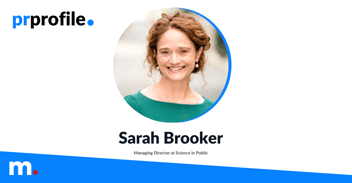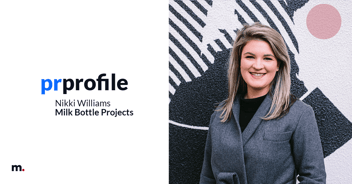'Banking time' and 'PR-ing' - how to fight the PR budget squeeze
Public relations professionals are under increasing pressure to prove the value of their activities. As budgets shrink and responsibilities expand, PR experts are grappling with demonstrating concrete returns on investment (ROI) while managing efficient workflows.
This struggle was the central theme of a recent webinar hosted by Medianet in partnership with CoverageBook, featuring insights from Medianet’s Managing Director, Amrita Sidhu and Stella Bayles, co-founder of CoverageBook.
When budgets are tight, PR professionals often fall into the trap of the DIY approach, feeling that handling tasks personally ensures they get done "right”, but also the illusion that it saves money.
However, as Stella noted, "the PR workflow is broad and grows all the time," and juggling all these tasks can not only lead to burnout. In fact, data from Medianet's 2023 Media Landscape Report indicated that a staggering 66% of PR professionals have experienced burnout, with 84% undertaking some form of unpaid work.
Another consequence of falling in the DIY trap is that it takes away the ability to focus on high-impact activities that prove the worth of PR .
"The reality is budgets are being challenged across the board," Amrita added, pointing to the $1 billion reduction in PR budgets cited in a Provoke Media study. This budget squeeze, combined with the expansive nature of modern PR activities, makes the DIY approach unsustainable. PR professionals need to be strategic about where they invest their time and efforts.
Advocating for Budget
The key to advocating for more resources is proving your campaign's value within the organisation. "There's a lack of consistent understanding on how to measure the success of PR campaigns," Amrita stated, emphasising the necessity of impactful, digestible presentations for internal stakeholders. It's about "PRing" the PR department itself—highlighting successes and explaining metrics in a language that budget holders understand.
Stella revealed that "91% of in-house budget holders said they would invest more budget with their agencies if they felt more confidence in their data ability." This statistic underscores the opportunity lying within improved measurement and reporting capabilities.
From output to outcomes
Proving the worth of PR involves a shift from output-based metrics (like the number of press releases issued) to outcome-based metrics that relate to organisational goals (such as lead generation, sales, or brand reputation enhancement, or prominent coverage). Both speakers emphasised the importance of aligning PR metrics with business objectives to communicate value effectively.
Reviewing workflows and looking at the tools that can make us more efficient enables professionals to allocate more resources toward strategies that drive tangible results, thereby making a stronger case for their budgets.
The role of technology
Embracing technology is essential for modern PR workflows. Tools like Medianet for media connections and CoverageBook for automated reporting help professionals save time, produce accurate metrics, and present data in an executive-friendly manner.
Stella elaborated on the notion of "banking that free time" by automating tasks, which allows PR professionals to focus on strategic, high-impact activities. "If you can automate any area of your work, you're banking that free time," she remarked.
Amrita touched upon the hesitation some have about adopting new tools: "You say to your colleague, 'I'm sure there's a better way of doing this,' and there's got to be a platform out there that solves this, but where do I even start finding it?" Despite this, she encouraged the audience to consider the cost of not adopting technology—the cost of time, efficiency, and ultimately, the campaign's success.
Building a business case
With extensive experience pitching budget proposals to key decision-makers, Amrita shared an invaluable strategy used at their company, Medianet.
1. Define Success Metrics and Measurement
Firstly, when considering an investment, such as a new lead generation platform, it's crucial to define what success looks like. Identify specific success metrics and how you plan to measure them. This clarity not only sets the direction but also provides a basis for evaluating potential ROI.
2. Proof of Concept
Before full-scale implementation, conducting a small proof of concept can make all the difference. This approach involves demonstrating the chosen tool or platform functionality and its measurable and non-measurable impact. Most tools today offer free trials or entry-level plans, perfect for this phase. Utilising these options helps in assessing the solution's fit without a substantial initial investment.
3. Time Optimisation and Resource Allocation
Crucially, your business case should address efficiency gains. Illustrate what your team intends to achieve with the time saved by the new solution. Decision-makers find it compelling if the hours recovered translate into activities that either generate revenue or optimise costs. This aspect speaks directly to the concern of budget offsets and contributes to a holistic view of potential benefits.
4. Demonstrate the ripple effect
Finally, weave these elements into a narrative that demonstrates how the proposed investment is not a standalone venture but a cog in the machine of the company's financial ecosystem. Showcasing how success in one area, facilitated by the new investment, can ripple across to other sectors of the business enhances the strength of your proposal.
Are you struggling to demonstrate PR success and ROI? Learn about Medianet's new Pickup Tracker, a feature that allows you quickly see the tangible results of your media coverage.



